Deep learning is a subset of machine learning that uses artificial neural networks for pattern recognition. It allows computers to simulate the thinking of humans by recognizing complex patterns in data and making decisions based on those patterns. In NLU, deep learning algorithms are used to understand the context behind words or sentences. This helps with tasks such as sentiment analysis, where the system can detect the emotional tone of a text. A subfield of artificial intelligence and linguistics, NLP provides the advanced language analysis and processing that allows computers to make this unstructured human language data readable by machines.
Contrast this with Natural Language Processing (NLP), a broader domain that encompasses a range of tasks involving human language and computation. While NLU is concerned with comprehension, NLP covers the entire gamut, from tokenizing sentences (breaking them down into individual words or phrases) to generating new text. Think of NLP as the vast ocean, with NLU as a deep and complex trench within it. Question answering is a subfield of NLP and speech recognition that uses NLU to help computers automatically understand natural language questions. You can type text or upload whole documents and receive translations in dozens of languages using machine translation tools.
How to Identify and Overcome Content Marketing Challenges
This enables machines to produce more accurate and appropriate responses during interactions. Times are changing and businesses are doing everything to improve cost-efficiencies and serve their customers on their own terms. In an uncertain global economy and business landscape, one of the best ways to stay competitive is to utilise the latest, greatest, and most powerful natural language understanding AI technologies currently available. NLP is a process where human-readable text is converted into computer-readable data. Today, it is utilised in everything from chatbots to search engines, understanding user queries quickly and outputting answers based on the questions or queries those users type.
- The “depth” is measured by the degree to which its understanding approximates that of a fluent native speaker.
- This may include text, spoken words, or other audio-visual cues such as gestures or images.
- ATNs and their more general format called “generalized ATNs” continued to be used for a number of years.
- Voice recognition software can analyze spoken words and convert them into text or other data that the computer can process.
You can use it for many applications, such as chatbots, voice assistants, and automated translation services. Automated reasoning is the process of using computers to reason about something. In the case of NLU, automated reasoning can be used to reason about the meaning of human language. Natural Language Understanding (NLU) is a transformative field at the intersection of artificial intelligence and human language. Through this exploration, we’ve unveiled the essence of NLU, which goes beyond conventional language processing to truly comprehend the meaning, context, and nuances within spoken and written communication.
Natural language understanding applications
On the other hand, entity recognition involves identifying relevant pieces of information within a language, such as the names of people, organizations, locations, and numeric entities. Before a computer can process unstructured text http://lozhka.su/all_comments.php?page=118 into a machine-readable format, first machines need to understand the peculiarities of the human language. The computational methods used in machine learning result in a lack of transparency into “what” and “how” the machines learn.
Using symbolic AI, everything is visible, understandable and explained within a transparent box that delivers complete insight into how the logic was derived. This transparency makes symbolic AI an appealing choice for those who want the flexibility to change the rules in their NLP model. This is especially important for model longevity and reusability so that you can adapt your model as data is added or other conditions change. Where NLP helps machines read and process text and NLU helps them understand text, NLG or Natural Language Generation helps machines write text.
The Success of Any Natural Language Technology Depends on AI
Neri Van Otten is a machine learning and software engineer with over 12 years of Natural Language Processing (NLP) experience. The multilingual and dialectal nature of language introduces significant complexity to NLU. NLU systems must contend with variations in grammar, vocabulary, idiomatic expressions, and cultural references across languages and dialects. Ensuring accurate language understanding and translation across this diverse linguistic landscape remains a substantial challenge. NLU proceeds with syntax and grammar analysis after dissecting the text into tokens.
Efforts to reduce bias in NLU models and ensure fair and transparent decision-making will continue to grow. Developing guidelines and regulations for NLU technology will become essential to address ethical concerns. Since then, with the help of progress made in the field of AI and specifically in NLP and NLU, we have come very far in this quest.
